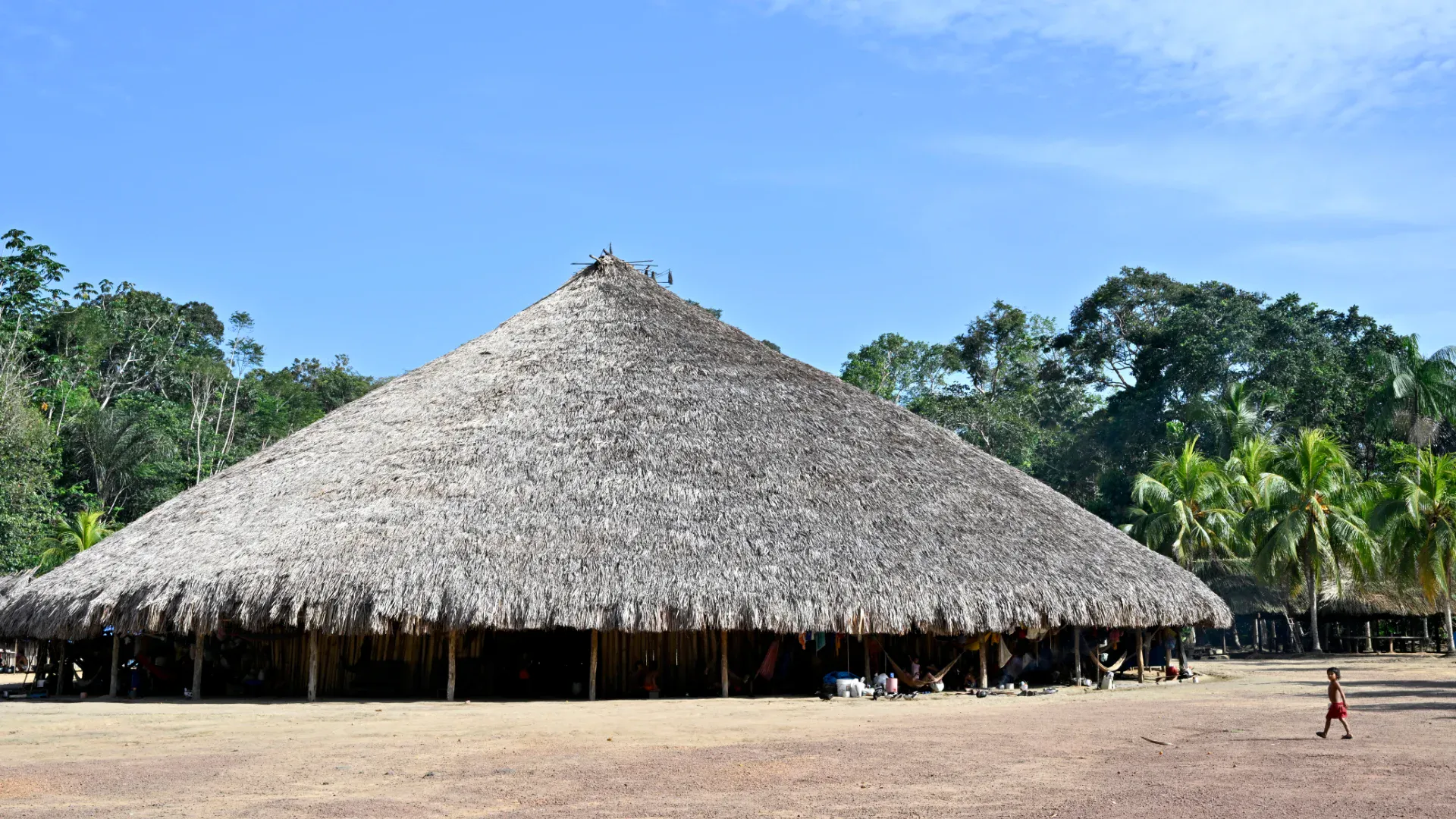WAIMIRI-ATROARI
The Reconecta Project works in full collaboration with the Waimiri-Atroari indigenous community to benefit biodiversity conservation and human well-being in their territory.
Community support is key to the success of this project, both for its implementation and to ensure its long-term continuity.
For over 30 years, the Waimiri-Atroari people have requested the Brazilian government to implement mitigation measures to reduce wildlife mortality on the roads cutting through their territory.
The impacts of the road on wildlife affect the aesthetic, religious, and cultural aspects of their community. Moreover, they consider animals killed by vehicles as a waste of a vital food resource the forest provides.
Among the activities that the Waimiri-Atroari community collaborates with Reconecta are:
Canopy bridges: community leaders discussed and approved the canopy bridge projects because they correspond to the locomotion characteristics of arboreal species in the study area, confirmed by the traditional ecological knowledge of community members.
Selection of locations for canopy bridges: three Waimiri-Atroari community leaders chose the locations where canopy bridges were installed. They chose the sites based on the highest number of arboreal animals found dead from vehicle collisions over the years. The leaders also considered the proximity to trees frequently used by these species for food and shelter. Some locations were specifically chosen because the Guiana spider monkey was observed crossing the highway.
Canopy bridge installation: over 150 members of the Waimiri-Atroari community participated in constructing and installing 30 canopy bridges.
Canopy bridge monitoring: the community is constantly updated on the results of the canopy bridges, with information such as which species have used the bridges and the number of individuals that have crossed them.
HISTORY
The Brazilian government’s first contact with the Waimiri-Atroari community, self-determined as the “Kinja” people, happened when the Federal Highway BR-174 was constructed in the 1970s during the military regime in Brazil. In this period, the policy for the Amazon region became known for the slogan “Integrate to not Surrender.” Along with the occupation and development of the territory came the destruction of the forest and its inhabitants, the indigenous people.
The highway opening in the states of Amazonas and Roraima directly impacted the Waimiri-Atroari community and their territory. Bombings, chemical and biological attacks, and much violence were recorded by the military, culminating in the death of over 3,000 indigenous. This conflict is considered the most severe case of indigenous genocide in Brazil, according to the United Nations (International Court of Justice, The Hague, Netherlands).
CONSERVATION OF THE AMAZON
Since the opening of BR-174, indigenous people have been facing its impacts daily, including wildlife mortality and the barrier effect for various species that avoid crossing the highways. In Waimiri-Atroari (WA) culture, fauna species hold enormous cultural significance. For example, the golden-handed tamarin (Saguinus midas) is considered a member of the WA community, but in the form of a monkey. Thus, the death of these individuals due to vehicle collisions is seen as the loss of a relative.
Since 1997, the Waimiri-Atroari people have been collecting data on wildlife roadkill along the 125 km stretch of BR-174 that cuts through their territory. This database is the largest citizen science project involving indigenous communities on the planet! They have already recorded over 17,000 roadkill incidents, with all animals identified by common names in Portuguese and Kinjara.
Furthermore, with the support of Professor Marcelo Gordo from the Federal University of Amazonas (UFAM), the Waimiri-Atroari community implemented a method to connect the tree canopy at specific points on BR-174. These natural passages form forested tunnels that aid in arboreal animal crossing. Part of this work consisted of demonstrating a less impactful pruning system to DNIT.
When BR-174 was completed, the military involved in the road’s construction recognized the damage caused to the community and the forest. As compensation, they installed chains at the entrances to Waimiri-Atroari territory, allowing the community to restrict nighttime traffic on the highway. This measure provided greater safety for the Waimiri-Atroari people and reduced roadkill during the night period.
Today, the traffic on BR-174 within the reserve is restricted from 6:00 pm to 6:00 am, with only ambulances, buses, official vehicles, and trucks carrying perishable goods permitted to pass.
The Waimiri-Atroari also conduct an intense monitoring system within their territory to curb hunting, deforestation, and illegal mining. In addition, other teams take turns in different maintenance activities on the road, such as cleaning up garbage along the highway.
The Waimiri-Atroari Indigenous Territory is considered one of the most preserved in the Amazon, with fundamental importance for conserving thousands of species of fauna and flora.








